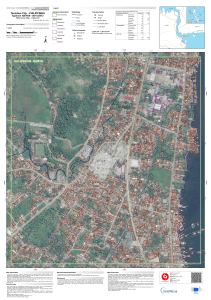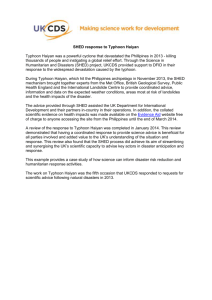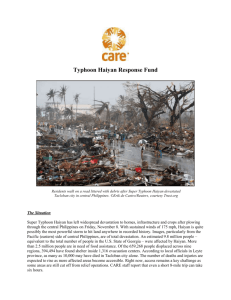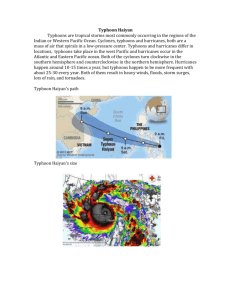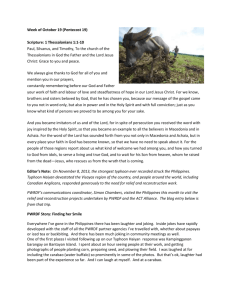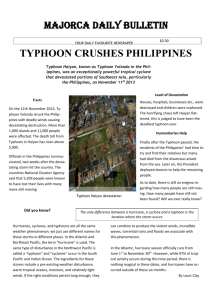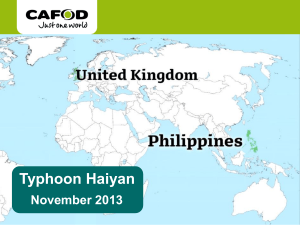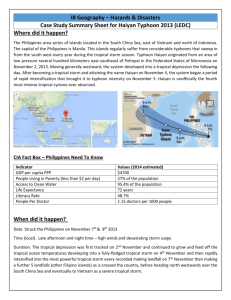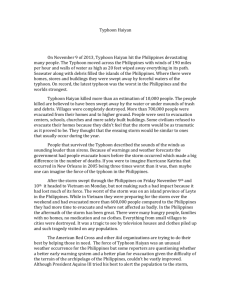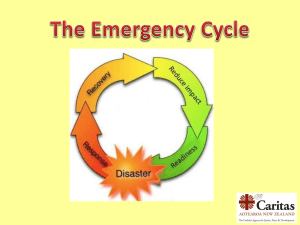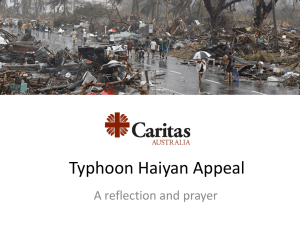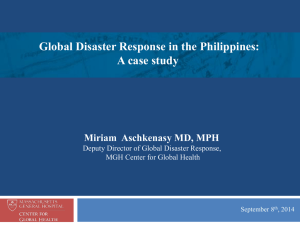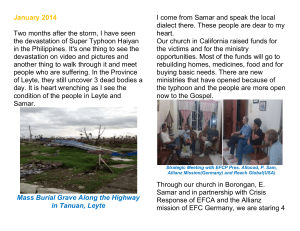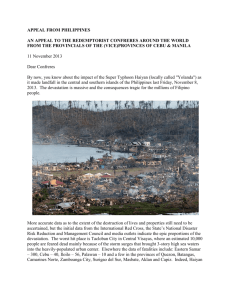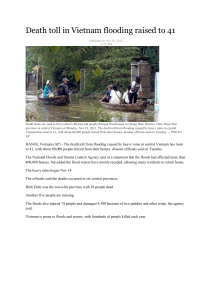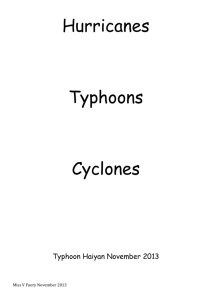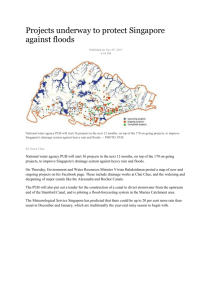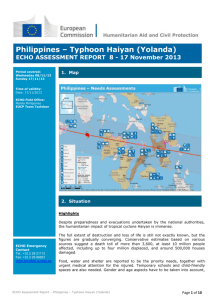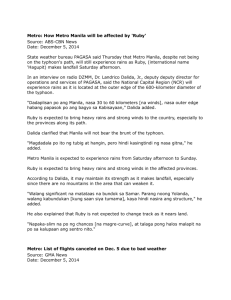Typhoon Haiyan hits Philippines with winds of 195mph
advertisement
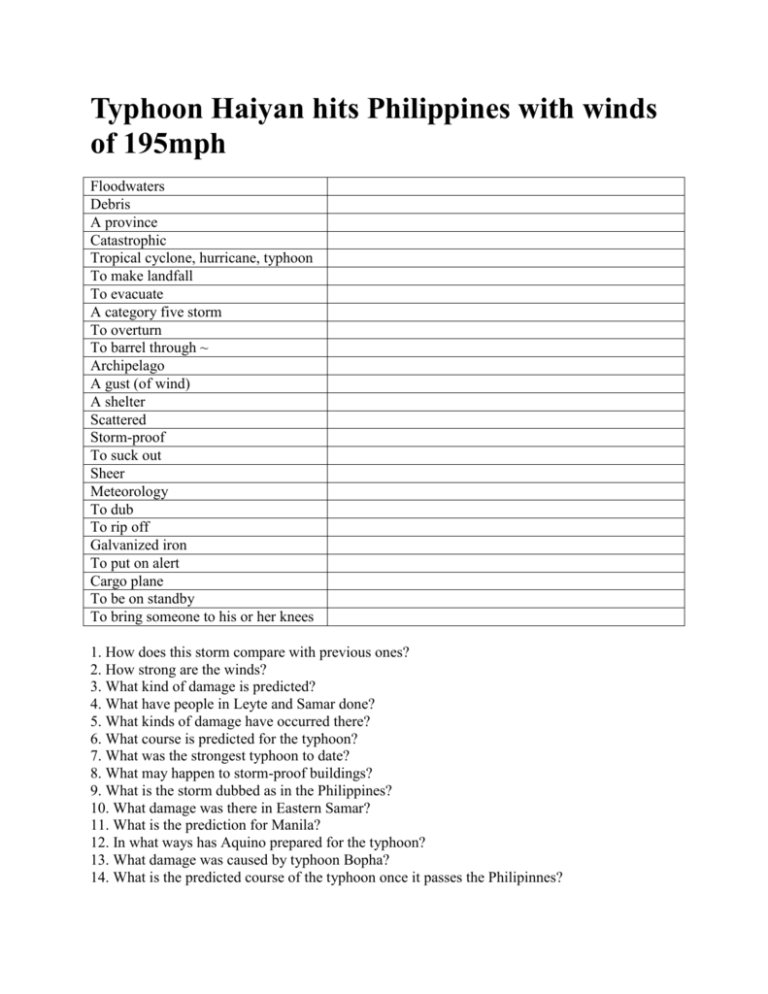
Typhoon Haiyan hits Philippines with winds of 195mph Floodwaters Debris A province Catastrophic Tropical cyclone, hurricane, typhoon To make landfall To evacuate A category five storm To overturn To barrel through ~ Archipelago A gust (of wind) A shelter Scattered Storm-proof To suck out Sheer Meteorology To dub To rip off Galvanized iron To put on alert Cargo plane To be on standby To bring someone to his or her knees 1. How does this storm compare with previous ones? 2. How strong are the winds? 3. What kind of damage is predicted? 4. What have people in Leyte and Samar done? 5. What kinds of damage have occurred there? 6. What course is predicted for the typhoon? 7. What was the strongest typhoon to date? 8. What may happen to storm-proof buildings? 9. What is the storm dubbed as in the Philippines? 10. What damage was there in Eastern Samar? 11. What is the prediction for Manila? 12. In what ways has Aquino prepared for the typhoon? 13. What damage was caused by typhoon Bopha? 14. What is the predicted course of the typhoon once it passes the Philipinnes? Enormous storm predicted to be largest ever recorded, topping hurricane Camille in 1969, hits north Pacific. Floodwaters carry debris through the streets of Tacloban city, Leyte province, as typhoon Haiyan hits the Philippines. Photograph: Reuters Typhoon Haiyan has hit the Philippines with winds of 195mph, with experts saying "catastrophic damage" will result from what is predicted to be the strongest tropical cyclone to make landfall in recorded history. Thousands of people have been evacuated and thousands more have fled their homes as the category five storm sent waves as high as 5m (15ft) ashore on the islands of Leyte and Samar in the central Philippines, overturning powerlines and leaving streets knee-deep in water. Haiyan – the Philippines' 25th typhoon so far this year – is expected to barrel through the archipelago close to Cebu, the nation's second-largest city and home to around 2.5 million people. With speeds at landfall of 195mph and gusts of up to 235mph, Haiyan is believed to be stronger than the world's last strongest tropical cyclone, hurricane Camille, which was recorded in the US at 190mph in 1969. Although schools and offices have been closed and roughly a million people are in shelters scattered around 20 provinces, Haiyan's powerful winds could potentially blow off the roofs of storm-proof buildings and suck out their walls due to the sheer force of its energy, experts have said. "There aren't too many buildings constructed that can withstand that kind of wind," meteorology expert Jeff Masters told the Associated Press of Haiyan's 195mph landfall. "The wind damage should be the most extreme in Philippines history." The storm – which is dubbed Yolanda in the Philippines – ripped iron roofs off buildings and threw trees across roads, cutting out power to entire provinces, particularly around the storm's centre in Eastern Samar province. "We've been hearing from my colleagues in [the city of] Tacloban that they've seen galvanised iron sheets flying just like kites," Mai Zamora, of the charity World Vision, told the BBC. "It's actually all around the roads now. The roads are flooded in Tacloban." Haiyan is expected to miss Manila, although the capital may get heavy rain and winds and has been put on low-level alert. President Benigno Aquino III said three cargo planes, 20 navy ships and 32 military planes and helicopters were on standby for rescue operations and to provide relief. "No typhoon can bring Filipinos to their knees if we'll be united," he said in a televised address. Typhoon Bopha in 2013 destroyed much of the southern islands, killing about 1,100 people and causing over $1bn worth of damage. Haiyan is expected to lessen by Saturday as it moves towards the South China Sea, where Vietnam, Laos and China are in its potential path.


